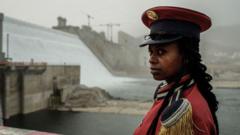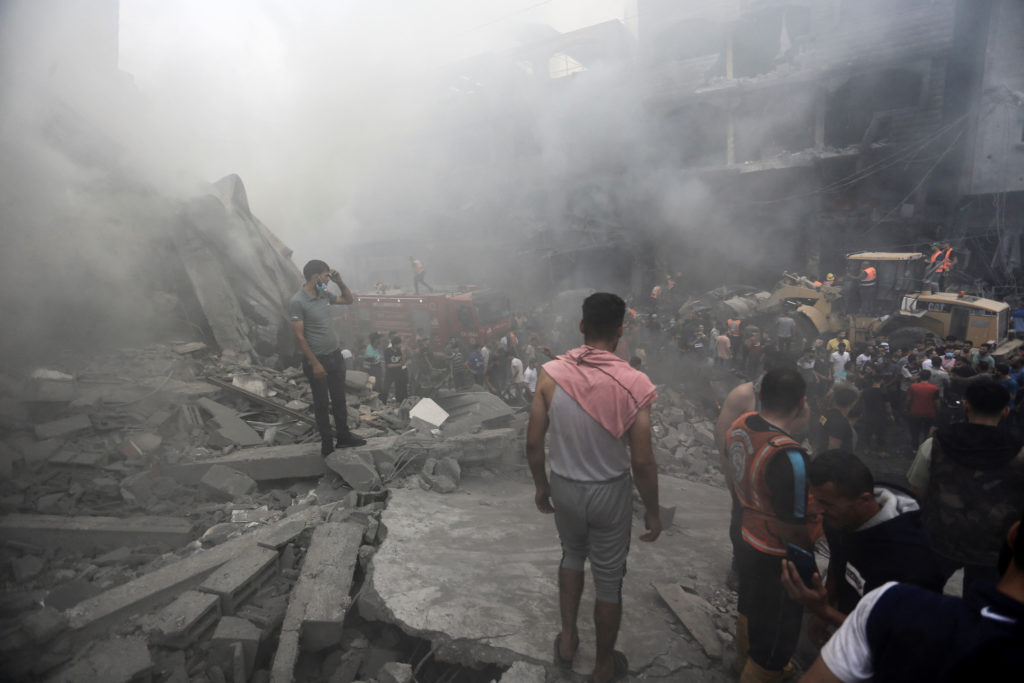The Ethiopian Prime Minister Abiy Ahmed recently declared the completion of the Grand Ethiopian Renaissance Dam (GERD) on the Blue Nile, marking a significant milestone in Africa’s largest hydroelectric project. With a budget of $4 billion, the dam not only stands as a powerful symbol of national pride but also as a critical solution to Ethiopia’s pressing energy needs, where approximately 60% of the population currently lacks access to electricity.
In a bid to foster regional cooperation, PM Abiy extended an olive branch to Egypt and Sudan, emphasizing the dam's potential for shared progress. "To our neighbours downstream - Egypt and Sudan - our message is clear: the Renaissance Dam is not a threat, but a shared opportunity," he stated. This comes in response to long-standing tensions surrounding the project, which Egypt fears may disrupt its essential Nile water supply. Egyptian President Abdel Fattah al-Sisi and Sudan's military chief Abdel Fattah al-Burhan have reiterated their concerns, warning of the impact that any unilateral decisions may have on their nations.
The GERD, stretching over more than a mile and standing 145 meters high, taps into the Blue Nile tributary, which is responsible for 85% of the river's waters. Ethiopia insists that the dam, which is set to be inaugurated in September, is crucial for development, as the previous negotiations with its downstream neighbors have struggled to yield constructive results.
Abiy expressed a willingness to engage with Egypt and Sudan constructively despite the historical complexities of the Nile Basin negotiations. He reassured that Ethiopia is committed to collaborative solutions that benefit all countries involved while maintaining the urgency to address domestic energy needs. As the dam stands ready to begin operations, the regional discourse will likely intensify as stakeholders navigate the intricacies of shared resources and water rights within the historically contentious Blue Nile Basin area.
In a bid to foster regional cooperation, PM Abiy extended an olive branch to Egypt and Sudan, emphasizing the dam's potential for shared progress. "To our neighbours downstream - Egypt and Sudan - our message is clear: the Renaissance Dam is not a threat, but a shared opportunity," he stated. This comes in response to long-standing tensions surrounding the project, which Egypt fears may disrupt its essential Nile water supply. Egyptian President Abdel Fattah al-Sisi and Sudan's military chief Abdel Fattah al-Burhan have reiterated their concerns, warning of the impact that any unilateral decisions may have on their nations.
The GERD, stretching over more than a mile and standing 145 meters high, taps into the Blue Nile tributary, which is responsible for 85% of the river's waters. Ethiopia insists that the dam, which is set to be inaugurated in September, is crucial for development, as the previous negotiations with its downstream neighbors have struggled to yield constructive results.
Abiy expressed a willingness to engage with Egypt and Sudan constructively despite the historical complexities of the Nile Basin negotiations. He reassured that Ethiopia is committed to collaborative solutions that benefit all countries involved while maintaining the urgency to address domestic energy needs. As the dam stands ready to begin operations, the regional discourse will likely intensify as stakeholders navigate the intricacies of shared resources and water rights within the historically contentious Blue Nile Basin area.


















